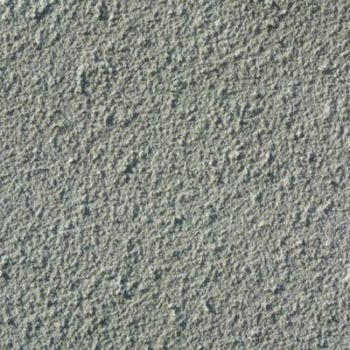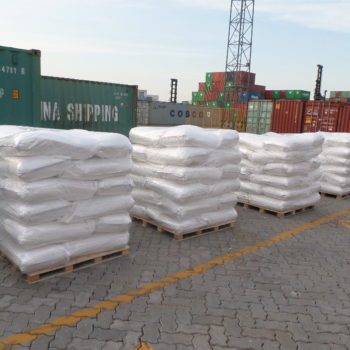Emerging Market Trends in the HPMC Industry in India
The HPMC industry in India has been experiencing significant growth in recent years. As one of the emerging market trends, this industry has caught the attention of investors and manufacturers alike. HPMC, or Hydroxypropyl Methylcellulose, is a versatile compound that finds applications in various sectors such as pharmaceuticals, construction, food, and personal care.
One of the key market trends in the HPMC industry in India is the increasing demand for pharmaceutical-grade HPMC. With the rise in the pharmaceutical sector in the country, there has been a growing need for high-quality excipients, and HPMC fits the bill perfectly. Its properties, such as controlled release, film-forming, and binding capabilities, make it an ideal choice for drug formulation. As a result, pharmaceutical companies are increasingly incorporating HPMC into their products, driving the demand for this compound.
Another emerging trend in the HPMC industry in India is the growing use of HPMC in the construction sector. HPMC is widely used as a thickener, binder, and water retention agent in cement-based products such as tile adhesives, grouts, and renders. Its ability to improve workability, adhesion, and durability of these products has made it a preferred choice among construction professionals. With the booming construction industry in India, the demand for HPMC in this sector is expected to witness significant growth in the coming years.
The food industry is also witnessing a surge in the use of HPMC. As a food additive, HPMC acts as a thickener, stabilizer, and emulsifier. It finds applications in various food products such as sauces, dressings, bakery items, and dairy products. The increasing consumer demand for convenience foods and the need for extended shelf life have led to the adoption of HPMC by food manufacturers. Moreover, HPMC is considered safe for consumption and is approved by regulatory authorities, further boosting its usage in the food industry.
In the personal care sector, HPMC is gaining popularity as a key ingredient in cosmetic and personal care products. Its film-forming and moisturizing properties make it an excellent choice for skincare and haircare products. HPMC is used in creams, lotions, shampoos, and conditioners to enhance their texture, stability, and performance. With the rising awareness about personal grooming and the demand for natural and organic products, the use of HPMC in the personal care industry is expected to witness substantial growth.
The HPMC industry in India is also witnessing technological advancements and innovations. Manufacturers are investing in research and development to improve the properties and performance of HPMC. Efforts are being made to develop HPMC with enhanced solubility, controlled release, and improved bioavailability. These advancements are aimed at meeting the evolving needs of various industries and expanding the applications of HPMC.
In conclusion, the HPMC industry in India is experiencing significant growth, driven by emerging market trends. The increasing demand for pharmaceutical-grade HPMC, its usage in the construction, food, and personal care sectors, and technological advancements are shaping the future of this industry. As the demand for HPMC continues to rise, manufacturers and investors are capitalizing on the opportunities presented by this growing market.
Key Players and Competitive Landscape in the HPMC Industry in India
The HPMC industry in India has witnessed significant growth in recent years, driven by various factors such as increasing demand for pharmaceuticals, cosmetics, and food products. As the industry continues to expand, it is crucial to understand the key players and competitive landscape in order to stay ahead of market trends.
One of the major players in the HPMC industry in India is Dow Chemicals. With its wide range of HPMC products, the company has established a strong presence in the market. Dow Chemicals is known for its high-quality products and innovative solutions, which have helped it gain a competitive edge over its rivals. The company’s focus on research and development has also enabled it to introduce new products that cater to the evolving needs of the industry.
Another key player in the HPMC industry is Ashland Inc. Known for its extensive product portfolio, Ashland offers a wide range of HPMC products that find applications in various industries. The company’s commitment to quality and customer satisfaction has helped it build a strong reputation in the market. Ashland’s strong distribution network and strategic partnerships have also contributed to its success in the industry.
Apart from these major players, there are several other companies that are making their mark in the HPMC industry in India. These include Shin-Etsu Chemical Co., Ltd., Colorcon Inc., and Shandong Head Co., Ltd. These companies offer a diverse range of HPMC products and have a strong presence in the market. They are constantly investing in research and development to stay ahead of market trends and meet the evolving needs of their customers.
The competitive landscape in the HPMC industry in India is intense, with companies vying for market share and striving to differentiate themselves from their competitors. One of the key strategies adopted by these companies is product innovation. By introducing new and improved products, companies can attract customers and gain a competitive advantage. They are also focusing on expanding their distribution networks to reach a wider customer base.
In addition to product innovation, companies in the HPMC industry are also investing in marketing and promotional activities to create brand awareness and enhance their market presence. They are leveraging various channels such as digital marketing, trade shows, and exhibitions to showcase their products and engage with potential customers. By building strong relationships with customers and understanding their needs, companies can gain a competitive edge in the market.
Furthermore, companies in the HPMC industry are also focusing on sustainability and environmental responsibility. They are adopting eco-friendly manufacturing processes and using renewable resources to reduce their carbon footprint. This not only helps them meet regulatory requirements but also appeals to environmentally conscious customers.
In conclusion, the HPMC industry in India is witnessing significant growth, and understanding the key players and competitive landscape is crucial for staying ahead of market trends. Companies like Dow Chemicals and Ashland Inc. have established themselves as major players in the industry, while others such as Shin-Etsu Chemical Co., Ltd. and Colorcon Inc. are also making their mark. These companies are investing in product innovation, marketing, and sustainability to gain a competitive edge in the market. By staying abreast of market trends and customer needs, companies can position themselves for success in the HPMC industry in India.
Growth Opportunities and Challenges in the HPMC Industry in India
The Hydroxypropyl Methylcellulose (HPMC) industry in India has been experiencing significant growth in recent years. This can be attributed to various factors, including the increasing demand for HPMC in various industries such as construction, pharmaceuticals, and food. However, along with growth opportunities, the industry also faces several challenges that need to be addressed.
One of the major growth opportunities in the HPMC industry in India is the booming construction sector. HPMC is widely used in the construction industry as a thickener, binder, and water retention agent. With the rapid urbanization and infrastructure development taking place in the country, the demand for HPMC in the construction sector is expected to witness substantial growth. This presents a significant opportunity for HPMC manufacturers to expand their production capacities and cater to the increasing demand.
Another growth opportunity lies in the pharmaceutical industry. HPMC is extensively used in the formulation of tablets, capsules, and other dosage forms. The growing pharmaceutical industry in India, coupled with the increasing focus on research and development, is expected to drive the demand for HPMC in the coming years. This provides a favorable market for HPMC manufacturers to tap into and explore new avenues for growth.
Furthermore, the food industry also offers potential growth opportunities for the HPMC industry in India. HPMC is used as a food additive, primarily as a thickener, stabilizer, and emulsifier. With the changing consumer preferences and the rising demand for processed and convenience foods, the demand for HPMC in the food industry is expected to witness a steady increase. This opens up new avenues for HPMC manufacturers to diversify their product offerings and cater to the evolving needs of the food industry.
However, along with these growth opportunities, the HPMC industry in India also faces several challenges that need to be addressed. One of the major challenges is the availability of raw materials. HPMC is derived from cellulose, which is primarily sourced from wood pulp. The availability and cost of wood pulp can significantly impact the production and pricing of HPMC. Therefore, ensuring a consistent and cost-effective supply of raw materials is crucial for the sustainable growth of the HPMC industry.
Another challenge is the competition from substitute products. HPMC faces competition from other cellulose derivatives such as methylcellulose and ethylcellulose. These substitutes offer similar functionalities and are often available at a lower cost. To stay competitive, HPMC manufacturers need to focus on product differentiation, quality improvement, and cost optimization.
Additionally, regulatory compliance is another challenge faced by the HPMC industry in India. The industry needs to adhere to various regulations and standards set by regulatory authorities such as the Food Safety and Standards Authority of India (FSSAI) and the Drug Controller General of India (DCGI). Ensuring compliance with these regulations requires significant investments in research and development, quality control, and testing facilities.
In conclusion, the HPMC industry in India offers significant growth opportunities in sectors such as construction, pharmaceuticals, and food. However, the industry also faces challenges related to raw material availability, competition from substitutes, and regulatory compliance. To capitalize on the growth opportunities and overcome these challenges, HPMC manufacturers need to focus on innovation, quality improvement, and regulatory compliance. By doing so, they can position themselves for sustainable growth in the dynamic Indian market.
Q&A
1. What is the current market size of the HPMC industry in India?
The current market size of the HPMC industry in India is estimated to be around INR 1,200 crore.
2. What are the key growth drivers for the HPMC industry in India?
The key growth drivers for the HPMC industry in India include increasing demand for pharmaceutical and healthcare products, growing awareness about sustainable packaging solutions, and rising investments in research and development activities.
3. What are the major trends in the HPMC industry in India?
Some major trends in the HPMC industry in India include the adoption of advanced manufacturing technologies, increasing focus on product innovation and customization, and the shift towards eco-friendly and biodegradable packaging materials.



